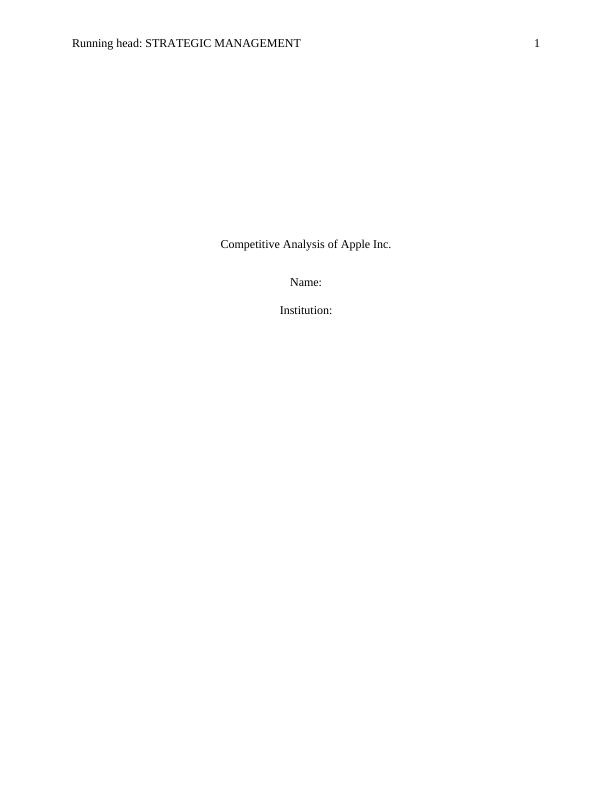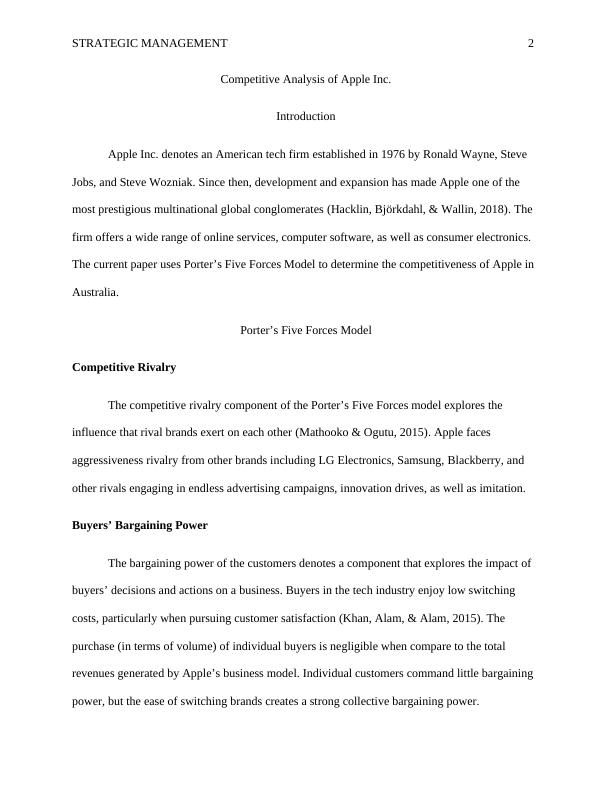Competitive Analysis of Apple Inc.
Conduct a macro-environment analysis for the entire industry within which the organisation (or SBU) operates using the PESTEL model. Identify key factors and their implications in terms of opportunities and threats, and discuss their overall impact on industry growth in the future.
5 Pages964 Words123 Views
Added on 2023-06-10
About This Document
This paper explores the competitiveness of Apple Inc. in Australia using Porter’s Five Forces Model. The paper examines the influence of competitive rivalry, buyers’ bargaining power, suppliers’ bargaining power, threat of substitutes, and threat of new entrants on Apple’s business operations. The paper concludes by suggesting that Apple should raise her competitiveness and adapt her strategies to align with the ever-increasing bargaining power of the customers or buyers.
Competitive Analysis of Apple Inc.
Conduct a macro-environment analysis for the entire industry within which the organisation (or SBU) operates using the PESTEL model. Identify key factors and their implications in terms of opportunities and threats, and discuss their overall impact on industry growth in the future.
Added on 2023-06-10
ShareRelated Documents
End of preview
Want to access all the pages? Upload your documents or become a member.
Sustainable Business Practices and Strategies - Evaluation of Competitive Forces
|13
|2957
|217
Innovation and Technology Analysis of Blackberry
|17
|3280
|262
Porter's Five Forces Model for Evaluating Competitive Forces of Apple Inc.
|11
|398
|138
Strategic Management Plan - Business Strategy
|8
|471
|413
Porter's Five Forces Model for Business Strategy (P3)
|12
|561
|228
Innovation and Technology: Analysis of Samsung and Apple
|15
|3254
|38


